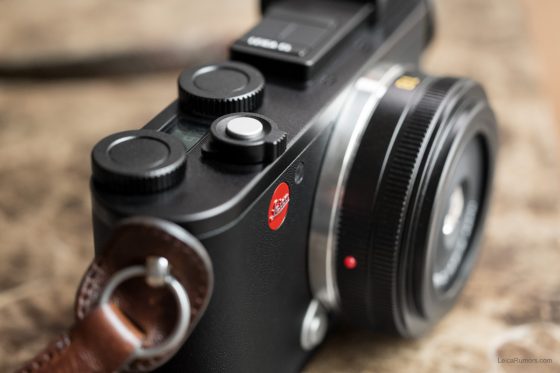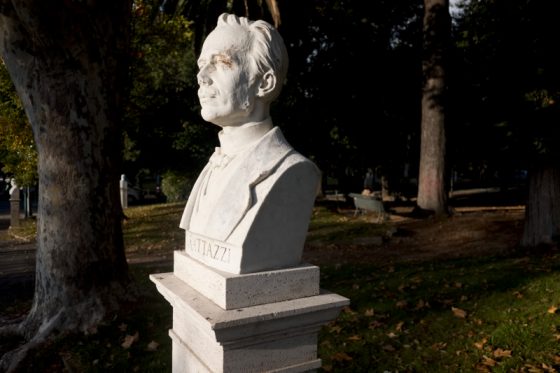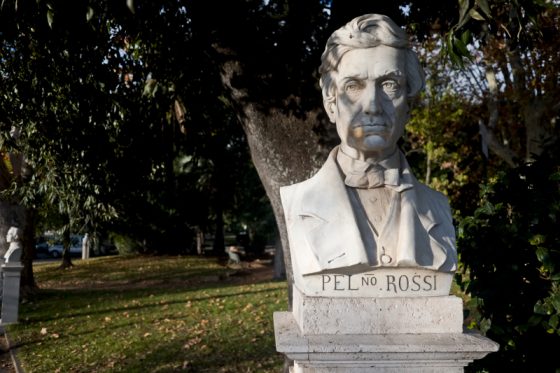Leica CL quick street review
This Leica CL mirrorless camera review is by Gianni Galassi (Flickr | Blurb):
Thanks to my friend Gilberto Benni, manager of the Leica Store Piazza di Spagna in Rome, I had the opportunity to quickly try the Leica CL just a couple of days after its official launch. As soon as we met, he handed me the camera along with the newly introduced Elmarit 18mm TL and an M-to-TL adapter. I only had three hours to play with the much awaited CL, so I ran out of the store and had a walk in downtown Rome.

Leica CL – Adapted Leica Elmarit-M 90mm – ISO 5000
As a film-era born photographer, Leica’s homage to the original CL of the Seventies aroused my expectations. The old CL was a marvelous tiny 35mm film camera with an M bayonet. I recall having owned two of them as back-ups for my M4P bodies, and they were a joy to use. Shortly, the film CL could be considered as a fully featured mini-M: same lenses, same format, same controls, same (more or less) build quality, all in a small, almost pocketable and cheaper package.
Thus my main curiosity was to find out if the digital CL can really be considered as a mini-digital-M. I sat down for a coffee and looked at the camera. Arguably, it’s sexy. Leica engineers brilliantly managed to shape a product which fully bears the DNA of the German manufacturer’s industrial design. It winks to the older 39mm thread-mount cameras line-up more than to the M lineage, in compliance with the vintage-is-good-hipster-is-better aesthetics mantra which inspires so many consumer products these days, from cars to motorcycles to bicycles, wrist watches and, well, cameras. Not that I dislike this, but it’s a point worth to be made. Build quality is on par with Leica standards, except for the battery/SD card compartment cover, which is definitely on the flimsy side. Not a dealbreaker, but we could expect more care in a not-so-affordable product. I do not object Leica’s pricing policy, I’m just considering this detail in a value-for-money perspective. This downside apart, the CL is a concentrate of awesome ergonomics and innovative solutions in a classic-ky photographer’s tool. The best of which are the two clever wheels/buttons on the top, allowing aperture, shutter speed, exposure compensation and mode selection setting, along with a wealth of optional controls. The small but easily readable display in the middle does a great job so that even an M photographer like your humble does not miss old-time dedicated dials and rings.
As far as the menu system is concerned, Leica has made their homework at their best, deserving nothing less than an A+. Like in the recent M10, pressing the menu button once displays a customizable quick menu list. A second press shows the full menu list, which is short, simple, photographer-oriented and handsomely written.
After card formatting, I started taking photographs with the 18mm pancake lens. Autofocus turned out to be fast and reliable. I’m no sport nor action photographer, but what I felt is a camera-lens system which catches focus with no hesitation nor hunting. In this regard, the CL is in a totally different league than the sluggish and now discontinued Xes and XVario. Another brilliant implementation from Leica engineers is the auto-to-manual-focus switching system: you just rotate the focus ring on your lens and are in full manual control, assisted by a magnified portion of the framed scene or, if you prefer, by a color-customizable focus peaking system. Shortly, setting the right distance is a breeze, even with such a short focal lens.
After a while, I realized that I had the M-to-TL adapter in my trousers pocket, so I gave the CL a try as an M-ish APS light body. I happened to have my 6-bit coded Elmarit-M 28mm on me, so I took some shots in this odd 42mm equivalent focal length. This is where things get a little messy, IMHO. I mean, I’m used to deceiving handling (and deceiving image quality as well, most of the times) when mating non-native lenses -even great lenses- to whatever body via adapters. I do not deny the excitement and the fetish value of this procedure, but frankly… Well, the CL is no surprise in this respect. Even with a tiny lens like the Elmarit 28 the camera feels unbalanced. As for focusing, either you zone-focus or resort to manually try and nail the right distance with your lens wide-open, and then remember to go back (manually) to the required aperture value. Unless you always shoot wide-open, which is not the most common way you use a wide -to say so- lens. Moreover, I don’t see the point in mating short focal full-frame lenses to crop-sensors: corners fall-off, field curvature, distortion and a lesser speed are a heavy price to pay. Add the cost of a good adaptor and you quickly realize that it’s a worthless game. The tune changes with standard or telephoto lenses. A crop sensor uses only the best part of their optics and you can take a worthy advantage of the increased equivalent focal length.
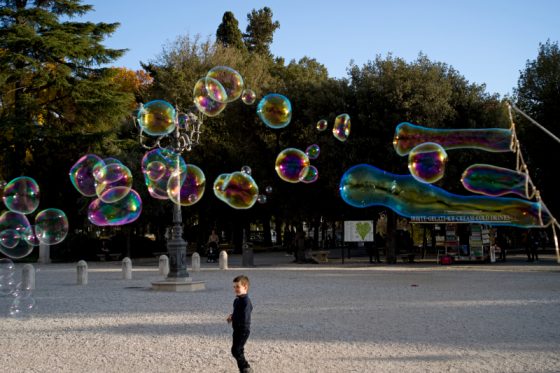
Leica CL – Adapted Elmarit-M 28mm
I happened to have my 6-bit coded Elmarit-M 90mm that day as well, so I treated myself with the opportunity to take some street shots (not my piece of cake at all) with a 135mm equivalent. This is the case when a wide-open lens makes the business, and the slender depth-of-field helps the focus peaking system to do the job at its best. Thanks to the good high-ISO performance of the CL I managed to take shots of tourists in front of the Spanish Step quite easily, despite the dim light and the lack of any in-lens or in-camera anti-shake system. Nonetheless, if you allow me a piece of advice, in case you are planning to buy the CL, you better forget all the lenses (vintage or recent) lying in your cabinet, budget a couple of good native TL primes and be a happy photographer. They don’t come cheap, I know but hey, you only live once. The 18mm pancake will not get your jaw drop for its image quality (it’s a tiny, lightweight and honest piece of optics), but the Summicron-TL 23mm is considered the best APS medium-wide-angle prime that money can buy.
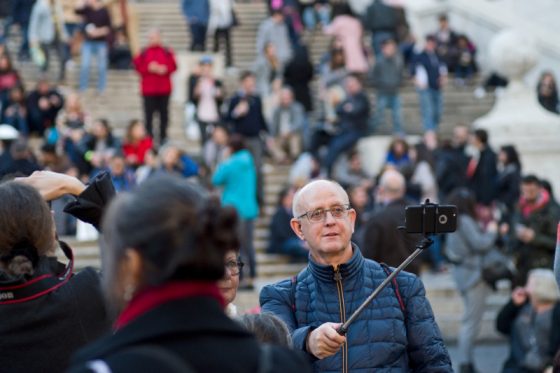
Leica CL – Adapted Leica Elmarit-M 90mm – ISO 1600

Leica CL – Adapted Leica Elmarit-M 90mm – ISO 1600

Leica CL – Adapted Leica Elmarit-M 90mm – ISO 1250

Leica CL – Adapted Leica Elmarit-M 90mm – ISO 1600
At last, after my three hours walk with the Leica CL I could answer my first question: no, the CL is far from being a mini-M. As a long-time M user, both film and digital, I think that we will never see a Third Millennium version of the old time CL. On the other hand, the new CL is a champion in its own league: it’s handsome, brilliantly designed, almost perfectly built and delivers great image quality. APS at its best, definitely. It comes at a price, of course, like good wine, food, cars and hotels do. And 24 megapixel is more than most of us will ever need in its photographic life. The recent hi-definition race is no more than an interesting tech exercise IMHO or, at worst, an insane marketing trick.
I read blogs stating that the CL in kit with the Elmarit 18mm could be a credible alternative to the Leica Q. I don’t believe this either. Although lacking lens interchangeability, the full frame Q is a more powerful photographic tool than the CL. I had a very satisfying experience with the Leica Q last year when shooting an architecture and landscape portfolio in Arctic Norway, the outcome of which is the subject of my next solo exhibition in Rome, opening next February. And I only sold that awesome camera when I could manage to find a second hand M Typ 262 at a reasonable price. The latter, along with a Monochrom CCD and 21, 28, 35, 50 and 90mm primes makes my perfect kit.
Nonetheless, if I was on the market to buy a new no-frills and photographer-oriented crop-sensor system camera, with the Leica red dot on it, organic color rendition and great flexibility for black and white conversion, along with a better-than-average out-of-camera jpg, I wouldn’t hesitate: the new CL would be my choice. Especially if I was a street photographer (which I’m not, as PhotoGraphia regulars certainly know).

Gilberto at work in Leica Sore Roma Piazza di Spagna
Leica CL – Adapted Leica Elmarit-M 90mm – ISO 2500
This review was originally published here, reposted with permission.
If you have an interesting idea for a guest post, you can contact me here.
Like the new Leica CL Facebook page and the Leica TL2 Facebook page.
Check Leica CL availability: B&H | Adorama | Leica San Francisco | Leica Miami | Popflash | Park Camera.
